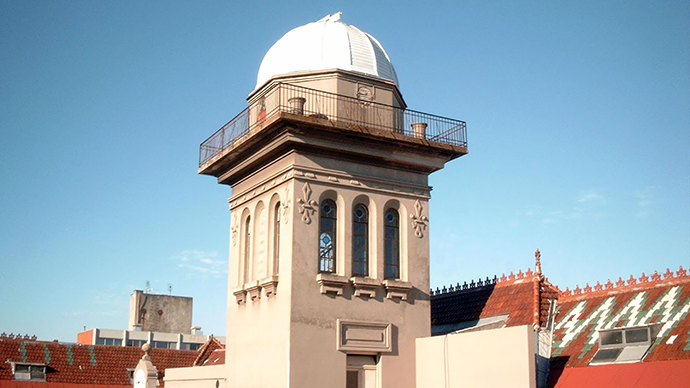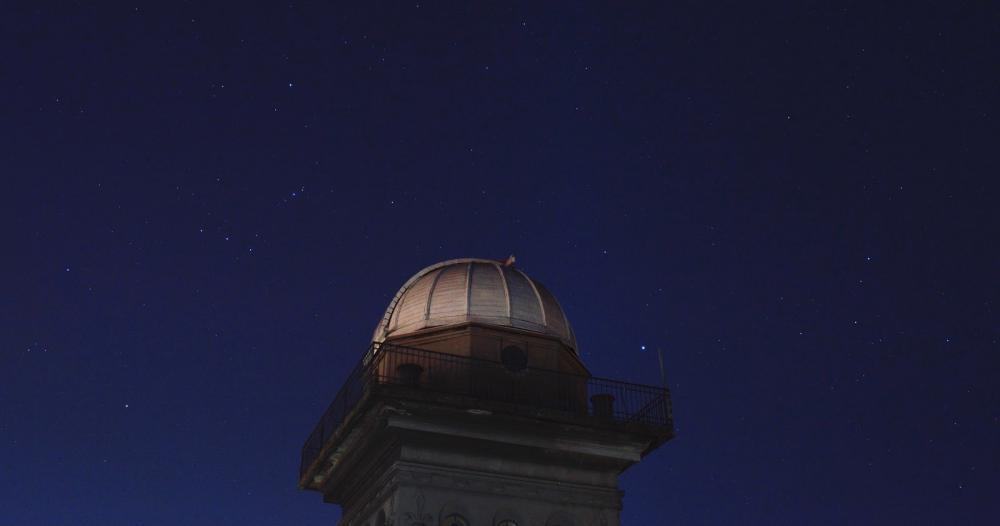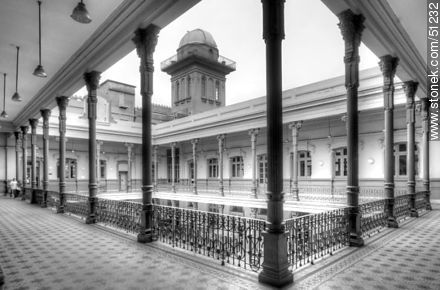
Category of Astronomical Heritage: tangible immovable
Observatorio Astronómico de Montevideo, Uruguay

Description
Geographical position
Montevideo Astronomical Observatory (Observatorio Astronómico de Montevideo - OAM),
José Enrique Rodó 1875 (Liceo "IAVA" 2┬║ piso), Barrio Cordón, 11200 Montevideo, Uruguay
See also: Kappa Crucis Observatory (Observatorio Kappa Crucis), IAU code 913
See also: Observatorio Astronómico Los Molinos
Location
Latitude 34.903845 S, Longitude 56.175914 W, Elevation ...m above mean sea level.
IAU observatory code
X50
Description of (scientific/cultural/natural) heritage
The scientific expedition of Malaspina sailed into Montevideo in September, 1789, with plans for extensive observations using instruments acquired in London by the Observatorio de San Fernando. The transit of Mercury of November 5, 1789 was observed by Alcalá Galiano and two other sailors from the balcony of the house of Doña Manuela Ruiz. Galiano kept a "Diario Astronomico en 1789 -- Montevideo", which survives in Madrid’s Naval Museum, and his measurements were used by Le Verrier. Instruments were set up at this house, and a small quadrant and a pendulum were installed a block away.
This site constitutes the first Observatorio de Montevideo, which later acquired a permanent structure with two meridian telescopes, by Troughton & Simms and by Salmoiraghi; and a Zeiss photographic refractor.
(Abraham, 2005).
In 1922, the construction of an astronomical observatory was projected and began to fulfill the purposes of research, teaching, dissemination and extension, in the high places of the Alfredo Vásquez Acevedo Institute, at that time belonging to the Secondary Section of the University of the Republic. The Observatory was created at the request of professors Alberto Reyes Thevenet (professor of Astronomy and Geography in Secondary Education, author of teaching texts and the vertical sundial that is located on the upper south wall of the building), Elzear Giuffra (professor of Geography and the Meteorological Service) and Armando Acosta y Lara (member of the Secondary Education Council).

Fig. 1. Observatorio Astronómico de Montevideo, Uruguay, founded in 1927 (OAM)
The Astronomical Observatory of Montevideo (OAM), inaugurated in 1927, is an institution dedicated to the teaching and dissemination of astronomy and astronomical, educational and scientific observation. The OAM is in the upper part of the building of the Alfredo Vásquez Acevedo Institute (IAVA), an institution belonging to the General Directorate of Secondary Education (DGES).
It started as an observatory for astronomical research, and is now for teaching astronomy in secondary schools and public outreach.
History

Fig. 2. Observatorio Astronómico de Montevideo, Uruguay, at night (Wikipedia 4, Danifernandez5)
Instruments
- 21-cm-refractor (f=3.0m), Carl Zeiss of Jena (1928)
- 20cm-Telescopio Meade LX90 (f=2.0m)
- 15-cm-Telescopio Meade LXD75 (f=1.2m)
State of preservation

Fig. 3. Corridors of the second floor of the Instituto Alfredo Vásquez Acevedo (IAVA) and the tower of the astronomical observatory de Montevideo (Foto: Patrimonio 2009 y 2011 -- Departamento de Montevideo)
Currently there is an astronomical museum that has been declared a National Historic Heritage Site.
Comparison with related/similar sites
Cf. Sydney (Observatory with a Tower)
Threats or potential threats
no threats
Present use
The OAM’s objectives are the dissemination and teaching of astronomy at all levels, including astronomical observation for scientific purposes.
Currently there is an astronomical museum that has been declared a National Historic Heritage Site.
Astronomical relevance today
The Astronomical Observatory of Montevideo is the reference observatory for secondary school observatories and is a base for teachers and students who wish to carry out observation and research projects for educational and / or scientific purposes.
Projects developed at the OAM: IASC, (Asteroid Search), Light Pollution, Astronomical Photography, AllSky and we will start working in BOCOSUR.
IASC: Students use software and images from professional observatories around the world and search for asteroids in them.
References
Bibliography (books and published articles)
- González, Ariosto D. (ed.): El primer observatorio de Montevideo. (Etchecopar, Carlos A. El pasaje de Mercurio observado en Montevideo el 5 de noviembre de 1789.) (Montero, Carlos Pérez. La casa del Observatorio y el Montevideo de la época.) Montevideo: Instituto Histórico y Geográfico del Uruguay, 1955 (148pp., 72 plates).
Links to external sites
No multimedia content published
Currently there is no multimedia content published for this case study








